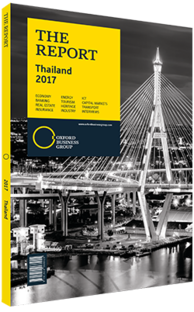Chartsiri Sophonpanich, President, Bangkok Bank: Interview

Interview: Chartsiri Sophonpanich
What role can Thailand’s banking sector play in financing development projects among its highgrowth neighbouring economies?
CHARTSIRI SOPHONPANICH: Combined with Thailand, the geographic region of Cambodia, Laos, Myanmar and Vietnam (CLMV) has a total population of 220m and a combined GDP of more than $1trn. This presents an exciting opportunity for establishing a regional supply chain as well as attractive urban consumer markets. Despite rapid growth, there is more room for further investment in the CLMV nations, especially in the form of infrastructure projects. Bonds have already been issued in Thailand for companies originating from the region and the banks are also well-placed to provide loans for their investment projects.
How can the sector accelerate its adoption of financial technologies, and what kind of improvements would such investment bring?
CHARTSIRI: Despite generating interest and excitement in the press, financial technology (fintech) is being adopted by the banking sector more gradually than in other economies like the US or China. Young urban Thais are beginning to use internet banking or mobile banking for both online and offline purchases, while some telecommunications companies and department stores have set up their own e-wallet platforms.
However, use of fintech by the public remains limited. Thai banks mostly use fintech to improve customer experience, especially for payments. This is in line with the country’s aim to become less cash dependent as seen by the launch of the national e-payment platform, PromptPay. Merchants, including more and more small and medium-sized enterprises (SMEs), are also starting to acquire electronic data capture machines to meet the growing demand for electronic payments. This will allow bank branches to shift their focus to non-cash services like financial advisory and wealth management. The banks always strive to improve their services for customers, whether it be by developing new technology organically, or by partnering strategically with fintech firms. At present, venture capital financing is not prevalent in Thailand, unlike in more advanced economies, but a handful of venture capital firms have recently been set up by major Thai banks and this trend is likely to continue in the short term.
How would you assess the potential of alternative capital-raising mechanisms?
CHARTSIRI: Equity crowdfunding has yet to gain a solid foothold in Thailand. This is largely due to a lack of awareness among investors in combination with the absence of well-known and trusted platforms. Nevertheless, the Securities and Exchange Commission and the Stock Exchange of Thailand will be relaxing regulations and requirements for a company wishing to go public. This should enable SMEs and start-ups to raise financing via the capital markets.
To what extent can the banking sector achieve strong loan growth despite the issue of rising non-performing loans (NPLs) in certain areas?
CHARTSIRI: Despite rising NPLs, I think the outlook for the sector’s stability remains solid and is resilient due to a prudent risk management framework and close supervision by the Bank of Thailand. The recent rise in NPLs has been gradual and moderate and therefore easily manageable; it should not concern the monetary authorities. That said, due to a tepid recovery in some parts of the economy, most banks have tightened lending standards, especially for vulnerable sectors such as SMEs and real estate. We expect moderate loan growth of 4-6% this year, conditional on our forecast of GDP growth of 3.5% in 2017. Large disbursements of government spending should also lift investor sentiment and trigger private investment, resulting in higher liquidity in various industries and a stronger economy; all beneficial factors for the Thai banking sector.
You have reached the limit of premium articles you can view for free.
Choose from the options below to purchase print or digital editions of our Reports. You can also purchase a website subscription giving you unlimited access to all of our Reports online for 12 months.
If you have already purchased this Report or have a website subscription, please login to continue.

